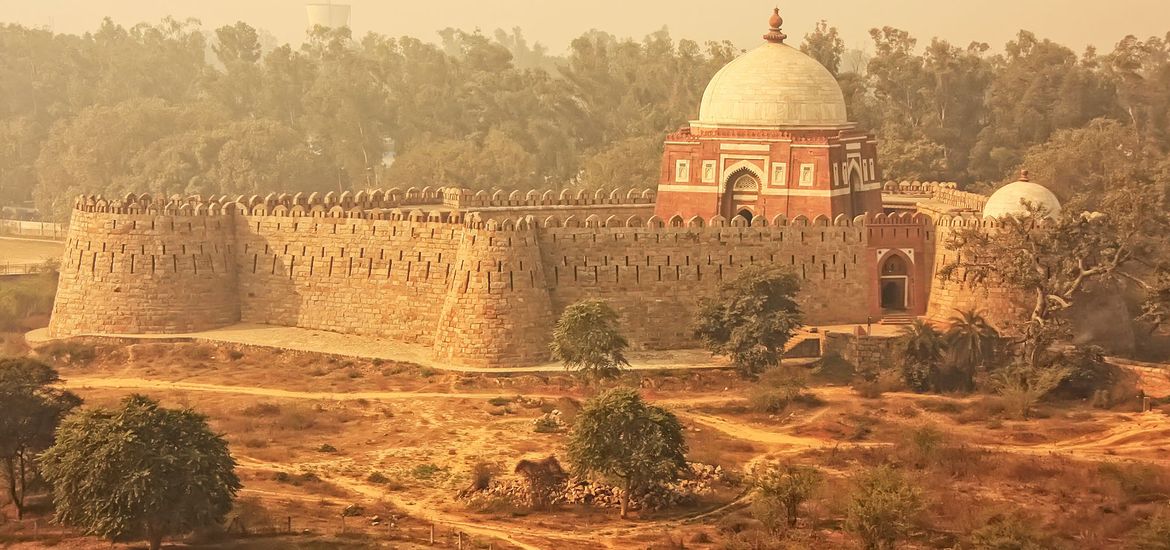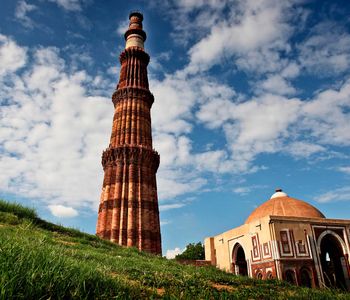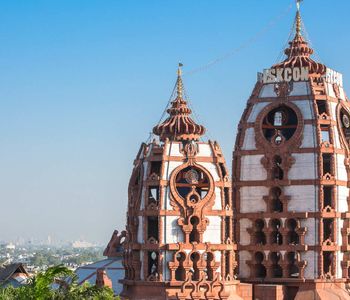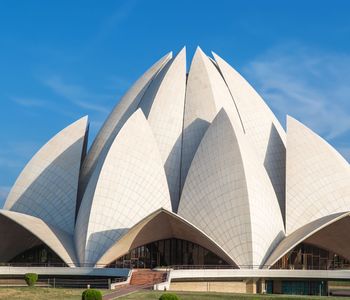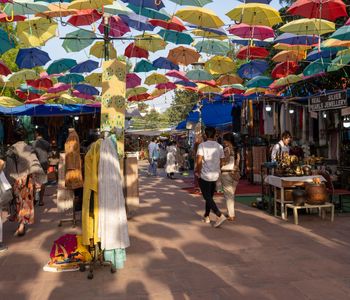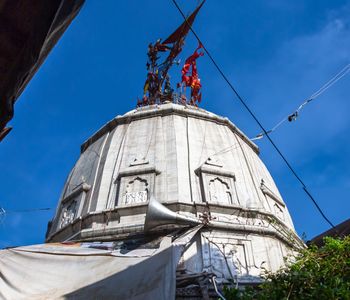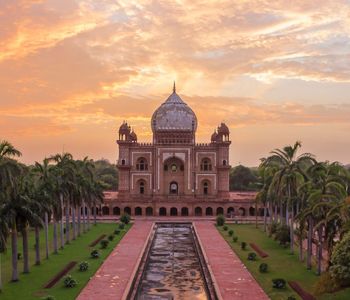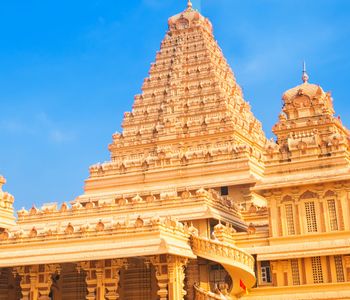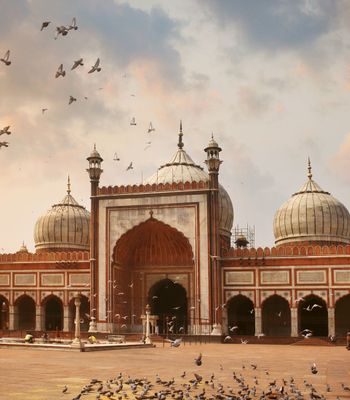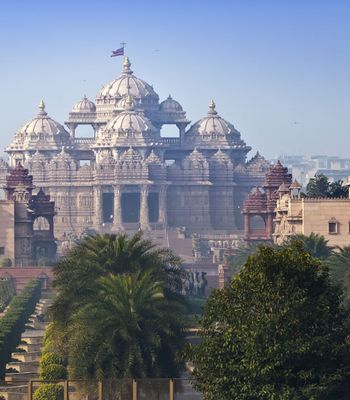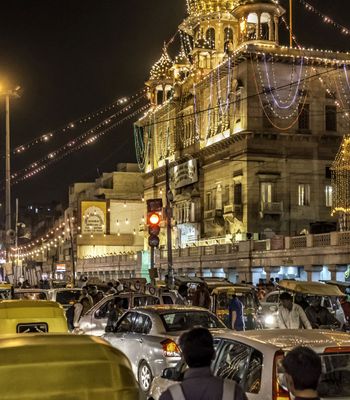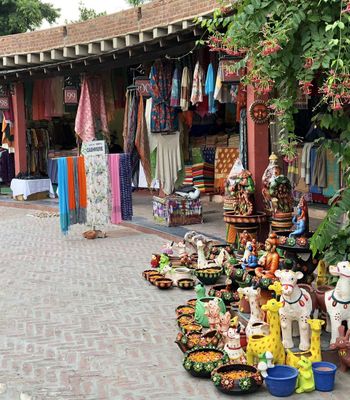In the heart of Delhi’s wild, rocky ridges lies a forgotten kingdom of stone — the Tughlaqabad Fort. Spread across massive acres of land, this ruined fortress’ high, slanting walls, silent chambers, and grand gateways speak of a time when power, pride, and a mysterious curse ruled Delhi.
Unlike the more polished Mughal structures, Tughlaqabad Fort feels raw and ancient. Walking through its broken paths feels like walking through the pages of a lost chapter in Delhi’s story.
Echoes of the Sultan: A Glimpse into the Past
Tughlaqabad Fort was built in 1321 AD by Ghiyas-ud-din Tughlaq, the first monarch of the Tughlaq dynasty. He wanted a grand fort that would protect his empire and show off his power.
And he got just that — thick stone walls, massive bastions, and watchtowers strong enough to stop any army. But the story of the fort doesn’t stop there.
Legend has it that Nizamuddin Auliya, a Sufi saint, was also constructing a stepwell. When the Sultan took away all the workers for his fort, the saint became angry and cursed the place, saying: “Ya rahe ujjar, ya base gujjar” (translation: May it stay empty or be filled with nomads).
Soon after the Sultan died, the fort was abandoned, and his dream city turned into a lonely ruin. Even today, some believe the curse still lingers.
Bold and Breathtaking: The Architecture of Tughlaqabad
Tughlaqabad Fort doesn’t try to charm you with carvings or colourful domes. Instead, it impresses with power.
The fort, made of bulky grey stone blocks, has the feel of a mountain fortress rather than a castle. Let’s look at what makes its architecture unique:
- Slanting Walls: These thick, angled walls were built to withstand enemy attacks and natural wear.
- High Gateways: The entrances are massive and majestic, designed to impress and protect.
- Watchtowers and Bastions: At regular intervals, these towers offered soldiers a high point to keep an eye on threats.
- Hidden Tunnels: Though many are sealed now, secret passages once helped the rulers escape in emergencies.
- Walled Perimeter: The fort was once surrounded by a 6.5 km long wall, making it one of the largest in Delhi.
Walk Through Time: Key Attractions and Hidden Corners
Entering the fort seems like travelling back in time. There’s no rush, no crowd, just the wind and the whispers of history. Here's what you’ll find:
Main Gate
The moment you arrive, the towering main gate greets you with its sheer size and strength. Made from thick stone blocks, it was once the main entry point for the royal army and officials. Its design speaks of defence and authority — wide enough for elephants, strong enough to stop invaders.
Ruined Palaces
A short walk inside, and you’ll find scattered remains of what were once majestic halls and royal chambers. These were the places where the Sultan held meetings, planned his strategies, and maybe even listened to music or poetry. Although the walls have crumbled, the layout still shows the outline of royal life.
Open Courtyards
Wander further, and you'll find large, open spaces that might have hosted markets, public addresses, or military drills. These courtyards were the heart of activity — now they rest quietly under the open sky, offering a glimpse of how vast and active the fort once was.
Tughlaq’s Tomb
Just outside the main fort, connected by a raised stone causeway, lies the tomb of Ghiyas-ud-din Tughlaq. It’s a small fortress of its own — with sloping walls, a pointed dome, and a peaceful garden. Simple yet strong, it reflects the Sultan’s personality and is one of Delhi’s best-preserved tombs from that era.
Stories that Haunt: Lesser-Known Facts and Legends
Tughlaqabad Fort may be in ruins, but its stories are very much alive. Here are a few things many don’t know:
- It was a Capital: The fort was supposed to be the capital city of the Tughlaq empire.
- Built in Four Years: With thousands of workers, the fort was completed quickly between 1321 and 1325 AD.
- Abandoned Soon After: Just a few years after the Sultan’s death, the fort was deserted — possibly due to the saint’s curse.
- A Mysterious Death: A mysterious death occurred when Ghiyas-ud-din Tughlaq was struck by a wooden canopy. It was allegedly orchestrated by his own son.
- Ghost Town Today: Locals say the fort is haunted, especially after dark. Many avoid visiting it in the evening.
As the sun sets over the broken domes and towers of Tughlaqabad Fort, the entire place is bathed in a golden glow. The city noises fade, and it’s just you, the wind, and the stones that have seen it all — power, ambition, betrayal, and silence. So, if you're ever in Delhi and want to experience something raw, real, and a little bit haunting, skip the usual stops and walk through the ghostly grandeur of Tughlaqabad Fort.
